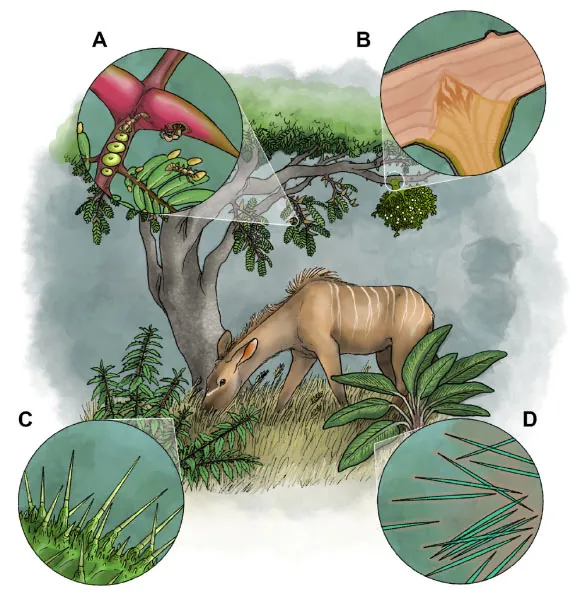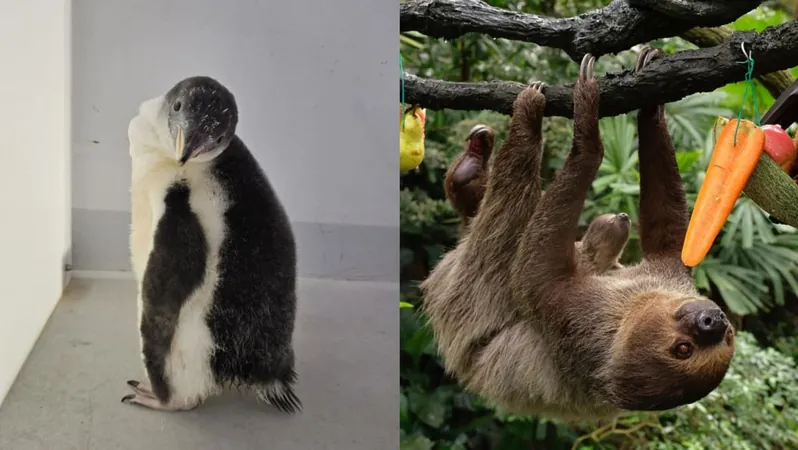
Shocking Discovery: Plants, Fungi, Bacteria, and Even Viruses Have Evolved Toxin Delivery Systems Rivaling Venomous Animals!
2025-03-26
Author: Siti
In a groundbreaking study, researchers have revealed that the intricate world of toxins extends far beyond the realm of animals, including venomous snakes and spiders. It appears that plants, fungi, protists, bacteria, and even viruses possess sophisticated toxin delivery systems that challenge the complexity found in traditional animal venoms.
For centuries, toxinologists and biologists have been captivated by the study of toxic organisms and the significant impacts that these substances have on human health. These toxins, often dangerous upon human exposure, are not just a threat—they hold the potential for developing innovative treatments for various ailments.
A New Framework for Biological Toxins
Emerging from this extensive research, scientists have established a framework to classify biological toxins into three categories based on their delivery methods.
1. **Poisons**: These substances are passively transferred without a delivery mechanism and can be introduced into the body through routes like ingestion, inhalation, or absorption.
2. **Toxungens**: These toxins are delivered directly to the body surface without a wound, often through mechanisms like spitting or spraying.
3. **Venoms**: These require the creation of a wound to be effective, as seen in bites and stings.
This comprehensive classification provides crucial insights into the evolution of toxins and their biochemical structures, alongside the mechanisms organisms have developed for their synthesis and storage.
While much of the conversation around venom has historically centered on animals, the study, led by Professor William Hayes from Loma Linda University, reveals that venom usage is prevalent in a much broader array of life forms than previously acknowledged. “Our findings demonstrate that the reliance on venom for survival strategies such as predation, defense, and competition is incredibly widespread,” Hayes stated emphatically.
Furthermore, the research indicates that various plant species utilize their own forms of toxins, employing spines, thorns, and stinging hairs to deter herbivores. Intriguingly, some plants form symbiotic relationships with stinging ants, offering them shelter in return for protection from potential threats.
The study also sheds light on how microorganisms have adapted with their own unique toxin-secretion mechanisms. Bacteria and viruses are equipped with advanced systems, such as secretion mechanisms and contractile injection systems, that allow them to introduce toxins into host cells, further illustrating the diverse strategies utilized across life forms.
Rethinking Venom and Toxins
Exploring a broader definition of venom has been a focus for Hayes and his team for over a decade. In their quest to understand what venom truly entails, they've uncovered numerous non-animal examples that have been largely overlooked. “We’ve only begun to explore the evolutionary pathways of how venom might have diversified across various organisms, which involves intricate processes like gene duplication and natural selection,” Hayes concluded, emphasizing the potential for further discovery.
This remarkable study promises to revolutionize our understanding of toxins and could lead to collaborative efforts among scientists across various disciplines to delve deeper into the evolutionary history of these fascinating secretions. Its findings were published in the journal *Toxins* and suggest a whole new world of possibilities in both nature and medicine as researchers look to harness these potent biological secrets for future therapeutic innovations.
Prepare to rethink everything you know about toxins—there's much more lurking in the shadows of the natural world!



 Brasil (PT)
Brasil (PT)
 Canada (EN)
Canada (EN)
 Chile (ES)
Chile (ES)
 Česko (CS)
Česko (CS)
 대한민국 (KO)
대한민국 (KO)
 España (ES)
España (ES)
 France (FR)
France (FR)
 Hong Kong (EN)
Hong Kong (EN)
 Italia (IT)
Italia (IT)
 日本 (JA)
日本 (JA)
 Magyarország (HU)
Magyarország (HU)
 Norge (NO)
Norge (NO)
 Polska (PL)
Polska (PL)
 Schweiz (DE)
Schweiz (DE)
 Singapore (EN)
Singapore (EN)
 Sverige (SV)
Sverige (SV)
 Suomi (FI)
Suomi (FI)
 Türkiye (TR)
Türkiye (TR)
 الإمارات العربية المتحدة (AR)
الإمارات العربية المتحدة (AR)